A so-called ingrown hair is a hair that didn’t erupt from the skin completely, or a hair that has grown back into the skin. Medically called folliculitis, this condition is also commonly called razor burn or bumps, shaving bumps and Pseudofolliculitis Barbae (PFB). This condition usually causes a localized infection and irritation of the skin, which can be seen as a red and irritated bump. Ingrown hairs can also simply hurt when you touch the area.
- The current incidence of PFB is unknown. It has been suggested that ~5 million blacks have severe PFB in the USA. It has however been reported less frequently in Asians, Hispanics and, fewer still, in Caucasians. In the military where a clean-shaven policy exists, earlier reports gave a prevalence of 45%–83% among black recruits and soldiers in the US army with fewer occurrences in the white soldiers.
- The pathogenesis of PFB is multifactorial. Implicated factors include the shape of the hair follicle, the structure of the hair, genetic factors, and hair grooming methods. Its onset is precipitated by hair removal in genetically predisposed individuals.
- Shaving of facial hair with various shaving instruments has been linked to PFB. Double-edged razor blades have been associated with transfollicular penetration of growing hairs. When using multiple blade razors, the first blade pulls the hair while the second cuts the hair. The pulled hair retracts into the follicle giving a smooth shave but encourages transfol-licular penetration of the growing hair. A recent report however has suggested that improper shaving techniques with razors rather than multiple blades is what predisposes to transfollicular penetration.
- Infrequent shaving allows the hair to grow to a length that leads to penetration. Plucking of hairs by various means may be insufficient leaving behind some hair fragment under the skin leading to an inflammatory reaction. Thus, frequent shaving is encouraged when using razors.
- PFB presents with pruritus or pain in the shaved areas a day or two after shaving, followed by the development of papules and pustules. Facial hair is the most common site for shaving, thus explaining why PFB is seen commonly on the face. The most common site in men is the anterior neck region, followed by the cheeks, and the chin. The anterior neck region is commonly affected because of the oblique nature and increased density of hair follicles in the area. In women, the chin is the most common area involved, most probably because hirsute women tend to have more hair on the chin when compared to the anterior neck and cheeks.
- In patients with acute inflammation, shaving should be stopped. Shaving an irregular skin surface due to the presence of the papules leads to more irritation. When ingrown hairs are few, the trapped hairs may be removed with the use of a sterile needle. Cessation of shaving may lead to a temporary increase in symptoms for the first few days, however this gradually improves over time. If shaving can be stopped then symptoms will abate and complications such as post-inflammatory hyperpigmentation or keloids can be dealt with.
- Keratolytics have been found useful in the management of PFB. They help in reducing the perifollicular hyperkeratosis associated with the condition. Topical keratolytics including retinoids, salicylic acid, and alpha hydroxy acids can be used. Daily application of glycolic acid has been found useful in treatment of PFB. Chemical peels, especially glycolic and salicylic acid peels, have also been found useful. Glycolic acid peels reduce the curvature of the hair by reducing the sulfhydryl bonds in the hair shaft, thus reducing the chance of penetration into the skin.
- The use of intralesional steroids, dermabrasion, semiablative lasers, and surgery have been found useful in the management of scars, including keloids.
Some 40% of young people (aged 18 to 25) have experienced an episode of folliculitis at least once, mainly because of improper care after waxing or shaving, or because they have curly hair that naturally tends to become ingrown. The condition is not limited only to women, since men could also suffer from ingrown hair, including on their face.
Why Does Ingrown Hair Happen?
The most common causes of ingrown hair are related to hair removal attempts, by shaving or waxing, or a curling of the growing hair. Shaving and incorrect waxing can cut the hair diagonally, leaving a sharp edge and provoking an ingrown hair. Infections of ingrown hair are mostly caused by bacteria or fungi. Mild cases do not require medical help, but serious infections have to be treated and looked after by a doctor.
Wearing tight clothes is also known to increase your risk of developing an ingrown hair. Sometimes, using a hot tub or swimming pool that hasn’t been chlorinated sufficiently could also provoke folliculitis. It can happen if you are using substances that could block the hair follicles, or if a razor cut on your skin gets infected by some fungus or bacteria.
Although everyone could experience an ingrown hair, some people are more likely to suffer from this condition. People who have acne or some other skin problems, overweight people and those who are using corticosteroids or antibiotics will probably have more ingrown hairs than the rest of the population. Living in a hot and warm climate may also be the cause of folliculitis.
What to Do with an Ingrown Hair?
First of all - prevent the situation, if you can. To reduce your risk of developing folliculitis, use a new razor every time you shave and a clean towel every time you shower or bathe. Wash yourself with anti-bacterial soap after shaving and avoid tight clothes that could compress the hair.
When you already experience pain and bumps from an ingrown hair, don’t worry. Most infections will clear on their own in a day or two. Gently coaxing the ingrown hair out with a pair of tweezers can help, but it is important to do this in sterile conditions.
If the folliculitis does not get better with time, or the infection is really bad consult your doctor. He or she might prescribe antibiotics (tablets or cream) or antifungal tablets, depending on the cause of infection.
Do not squeeze the infected ingrown hair, and don’t pick the pimple, because it may worsen the condition. Sometimes, after you disinfected the area, it might be helpful to you use a cloth dipped in hot water and press it to the bump. When the hair is on the surface of the skin, you can use some tweezers and pull it out.




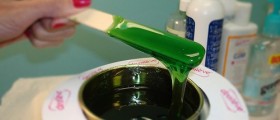
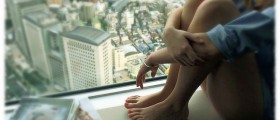
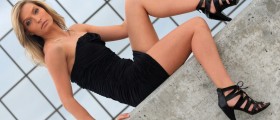

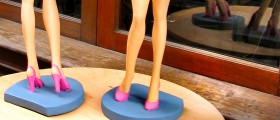

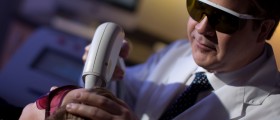
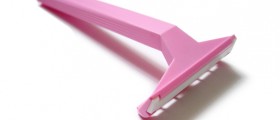
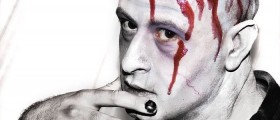
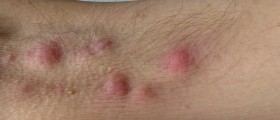
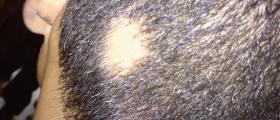
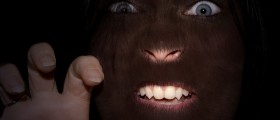

Your thoughts on this
Loading...